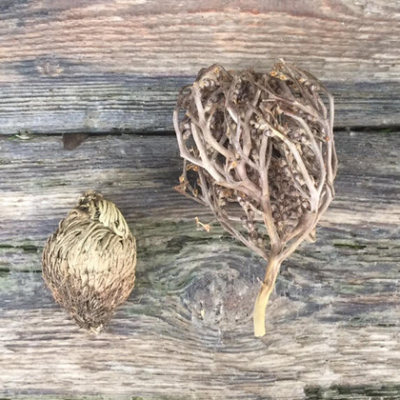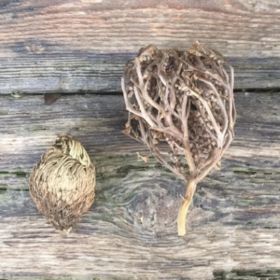Artemisia arborescens, Real Rose of Jericho, Rose of Jericho
The fake Rose of Jericho, Selaginella lepidophylla and the Real rose of Jericho anastatica-hierochuntica
The Rose of Jericho, also known as the Resurrection plant, has captured the fascination of people for centuries. Its unique ability to appear dead and revive after being exposed to water has led to various legends and myths surrounding it. However, there are two types of plants that are often confused with each other – the fake Rose of Jericho, Selaginella lepidophylla, and the real Rose of Jericho, Anastatica hierochuntica.
Selaginella lepidophylla, also known as the False Rose of Jericho, is a small plant native to the Chihuahuan Desert of North America. It is a type of spikemoss that has adapted to its arid environment by curling up into a tight ball when water is scarce, forming a seemingly dead ball of brown foliage. This is known as desiccation tolerance, and it allows the plant to survive for long periods without water. When water is available, the plant unfurls and turns green, appearing to come back to life.
While Selaginella lepidophylla is often sold as a “Rose of Jericho” in shops and online stores, it is important to note that it is not the true Rose of Jericho, Anastatica hierochuntica.
Anastatica hierochuntica is a perennial plant native to the deserts of the Middle East, particularly the Peninsula and the Dead Sea region. It is a member of the Brassicaceae family and has small, white, fragrant flowers that bloom in the spring. The plant’s most notable feature is its ability to roll up into a ball when it is dry, much like Selaginella lepidophylla. However, when water is added to the plant, it does not simply unfurl and turn green like its fake counterpart.
Anastatica hierochuntica has been used for medicinal purposes for thousands of years, particularly in traditional Cristian Arabic and Islamic medicine. It is said to have a range of benefits, including as a diuretic, a remedy for headaches, and a treatment for hypertension. In addition, the plant’s ability to revive after being completely dry has led to it being associated with spiritual rebirth and renewal in many cultures.
The confusion between the fake and real Rose of Jericho has led to disappointment for many people who purchase the former, expecting it to revive and grow like the latter. While Selaginella lepidophylla is an interesting and unique plant in its own right, it is important to understand the differences between the two species to avoid confusion.

In terms of care, both plants are relatively easy to care for, but there are some key differences. Selaginella lepidophylla should be kept in bright, indirect sunlight and watered sparingly, as it prefers dry conditions. Anastatica hierochuntica, on the other hand, prefers full sunlight and well-drained soil. It should be watered thoroughly when the soil is completely dry, but care should be taken not to overwater, as this can cause root rot.
In conclusion, the fake Rose of Jericho, Selaginella lepidophylla, and the real Rose of Jericho, Anastatica hierochuntica, are two very different plants that are often confused with each other. While both have the unique ability to appear dead and revive after being exposed to water, only Anastatica hierochuntica produces a delicate green rosette when watered, and it is the true Rose of Jericho with a rich history of medicinal and spiritual significance.

